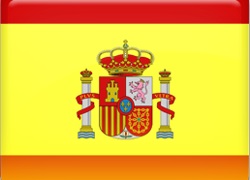Goodison Park, Everton’s home since 1892, will host its last-ever Merseyside derby on Wednesday as the Toffees look to disrupt Liverpool’s Premier League title challenge.
Everton’s Goodison Park Set for Emotional Final Merseyside Derby


Next season, Everton will move to a modern 53,000-capacity stadium at Bramley-Moore Dock, bidding farewell to England’s first major football ground.
The origins of Goodison Park played a pivotal role in shaping the rivalry between the city’s two clubs. Everton, founded in 1878, originally played at Anfield. However, a rent dispute between the club’s board and their landlord, John Houlding, led to Everton relocating to a new site just across Stanley Park, less than a mile away.
Left with a stadium but no team, Houlding, a local businessman and politician, decided to form his own club—Liverpool.
Goodison Park was a revolutionary development in football stadiums, hosting the FA Cup final twice in 1894 and 1910. Its immense crowds helped Everton become the richest club in England at the time.
"Behold Goodison Park!" wrote the publication Out of Doors in October 1892.
"No single picture could take in the entire scene the ground presents; it is so magnificently large."
Over the next century, Goodison remained one of England’s premier stadiums, second only to Wembley in the number of matches hosted during England’s 1966 World Cup triumph.
A Legacy of Glory and Struggles
Everton’s golden era came in the 1980s, when they won two league titles, the FA Cup, and the European Cup Winners’ Cup between 1984 and 1987. They remain fifth in the all-time list of English top-flight champions, behind only Manchester United, Liverpool, Arsenal, and Manchester City.
However, their last league title came 38 years ago, and they have not won a major trophy since the 1995 FA Cup.
"It’s a place steeped in history. You can feel it, and that adds a special bite to the atmosphere," said Peter MacFarlane of Everton fan podcast The Blue Room in an interview with AFP.
"As an Evertonian, not many people support us for the glory—especially over the past 30 years. We go because we love the club, and that passion translates into Goodison. It’s not just any game; it means everything to us, especially the derby!"
The Changing Landscape
Goodison Park’s status has reflected the club’s decline on the pitch. When the Park End Stand opened in 1994, increasing the capacity to 40,000, Goodison was only behind Old Trafford and Anfield in size. Today, it ranks 12th among Premier League stadiums.
Despite struggles in recent seasons, the Goodison atmosphere has played a crucial role in Everton’s fight for survival, helping them maintain their 71-year stay in the top flight.
David Moyes’ return as manager last month has provided fresh hope, guiding the team towards safety and a new chapter in their history.
"We’ll all miss Goodison. My grandad went, my dad went—it’s all we’ve ever known. But it’s time to move on," MacFarlane added.
"It doesn’t matter where Everton play; Evertonians will always be there."
With just seven games remaining at Goodison, an emotional farewell is in sight. And for Everton fans, disrupting Liverpool’s bid to equal Manchester United’s record of 20 English league titles would be the perfect parting gift.

 বাংলা
বাংলা  Spanish
Spanish  Arabic
Arabic  French
French  Chinese
Chinese 
